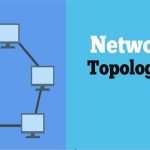Introduction
A LAN consists of shared transmission medium and a set of hardware and software for interfacing devices to the medium and regulating the ordering access to the medium. These are used to share resources (may be hardware or software resources) and to exchange information. LAN protocols function at the lowest two layers of the OSI reference model: the physical and data-link layers. The IEEE 802 LAN is a shared medium peer-to-peer communications network that broadcasts information for all stations to receive. As a consequence, it does not inherently provide privacy. A LAN enables stations to communicate directly using a common physical medium on a point-to-point basis without any intermediate switching node being required. There is always need for an access sublayer in order to arbitrate the access to the shared medium.
The network is generally owned, used, and operated by a single organization. This is in contrast to Wide Area Networks (WANs), which interconnect communication facilities in different parts of a country or are used as a public utility. These LANs are also different from networks, such as backplane buses, that are optimized for the interconnection of devices on a desktop or components within a single piece of equipment.
Key features of LANs are summarized below:
· Limited geographical area – which is usually less than 10 Km and more than 1 m.
· High Speed – 10 Mbps to 1000 Mbps (1 Gbps) and more •
· High Reliability – 1-bit error in 1011 bits.
· Transmission Media – Guided and unguided media, mainly guided media is used; except in a situation where infrared is used to make a wireless LAN in a room.
· Topology – It refers to the ways in which the nodes are connected. There are various topologies used.
· Medium-Access Control Techniques –Some access control mechanism is needed to decide which station will use the shared medium at a particular point in time. In this lesson we shall discuss various LAN standards proposed by the IEEE 8.2 committee with the following goals in mind:
· To promote compatibility
· Implementation with minimum efforts
· Accommodate the need for diverse applications
For the fulfilment of the abovementioned goals, the committee came up with a bunch of LAN standards collectively known as IEEE 802 LANs as shown in Fig. 5.3.1. To satisfy diverse requirements, the standard includes CSMA/CD, Token bus, Token Ring medium access control techniques along with different topologies. All these standards differ at the physical layer and MAC sublayer, but are compatible at the data link layer.

IEEE 802 Legacy LANs
The 802.1 sublayer gives an introduction to set of standards and gives the details of the interface primitives. It provides relationship between the OSI model and the 802 standards. The 802.2 sublayer describes the LLC (logical link layer), which is the upper part of the data link layer. LLC facilitate error control and flow control for reliable communication. It appends a header containing sequence number and acknowledgement number. And offers the following three types of services:
· Unreliable datagram service
· Acknowledged datagram service
· Reliable connection oriental service
The standards 802.3, 802.4 and 802.5 describe three LAN standards based on the CSMA/CD, token bus and token ring, respectively. Each standard covers the physical layer and MAC sublayer protocols. In the following sections we shall focus on these three LAN standards.


